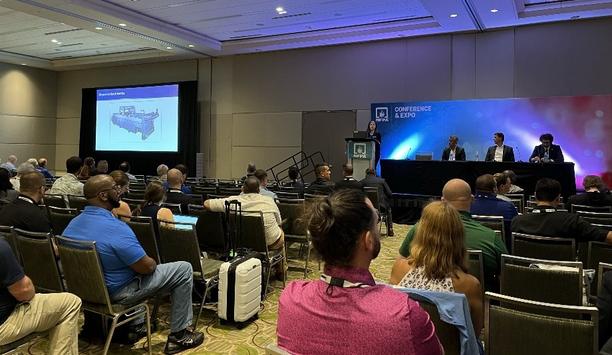While wildfires can be beneficial and necessary for some species and ecosystems, there are various negative impacts on our air, water, and land, as well as, subsequent impacts for human health.
Given the U.S. Environmental Protection Agency’s (EPA) mission to protect human health and the environment, the EPA’s Wildland Fire Research focuses on the impacts these fires have on human health and ecosystems.
Examining ambient air quality
EPA researchers are examining the worsening of ambient air quality from smoke and the contamination of surface and drinking waters, as well as ecological effects to habitats impacted by fire.
EPA’s Wildland Fire Research aims to address knowledge gaps across wildland fire topics, including:
- Development and evaluation of applicable ambient measurement technologies,
- Fate and transport of wildland fire smoke emissions,
- Elucidation of primary and secondary ambient air quality impacts,
- Effective interventions to reduce smoke exposure,
- Communicating health risk and public education strategies
- Impacts of fire and smoke on watersheds, and drinking water,
- Remobilization of chemicals at contaminated sites,
- Air, water, and soil impacts of fires that reach the wildland-urban interface (WUI),
- Public health impacts resulting from smoke, and
- Integration of social science approaches into public health research.
Key contributions to emissions characterization
EPA has made and continues to make significant contributions to the body of knowledge on emissions characterization (emission factors). These include measuring and modeling smoke’s impact on air quality, especially concentrations of fine particles and ozone. They are also working to characterize the chemical components of smoke and their respective toxicities.
Other contributions include physiological responses to smoke exposure; epidemiological studies for understanding population exposure to smoke and health outcomes; and impacts of fire on water quality and quantity. The EPA seeks social science methods to develop communication and community capacity tools to help communities reduce exposure during smoke episodes.
Air quality impacts of alternative fire management practices
Improving understanding of these impacts can help support forest management decisions to prevent severe fires
EPA is collaborating with the U.S. Forest Service and the Department of the Interior to evaluate air quality impacts of alternative fire management practices, including prescribed fires that can reduce the severity of wildfires. Improving understanding of these impacts can help support forest management decisions that can prevent severe fires.
EPA research has not focused on occupational health regarding wildland fires. While occupational exposure studies are very important, this works falls under missions of the National Institute for Occupational Safety & Health (NIOSH) and the Occupational Safety and Health Administration (OSHA).
Assessment on impact of prescribed fire and wildfire
EPA is leading the development of an assessment, comparing the impacts of prescribed fire and wildfire, in coordination with the U.S. Forest Service (USFS) and the Department of the Interior (DOI), with contributions from the National Institute of Standards and Technology (NIST).
This report will provide a better understanding of the health and environmental impacts of wildland fire, specifically smoke. The interagency approach is critical as USFS and DOI are experts in understanding various aspects of fire, NIST is an expert in the damages from fires, and EPA provides expertise in understanding the public health and environmental impacts of fire.
EPA’s Wildland Fire Research
As EPA’s Wildland Fire Research grows and adds to the body of knowledge over time, much of the findings will impact protecting human health and the environment by characterizing and developing strategies to mitigate the impacts of wildfire smoke on human health and ecosystems. EPA research on this topic will also inform the way we prepare, respond, and recover from wildland fires.
EPA’s researchers are top scientists, representing a broad range of disciplines, including atmospheric science, health sciences, ecology, and social sciences. They are faced with the growing challenges associated with climate change and ensuring equitable protection for all citizens including disadvantaged communities who bear a disproportionate impact from air pollution and climate change.
EPA’s multi-disciplinary researchers, together with partners from throughout federal, state, and local government agencies around the country, are working together to address these challenges. EPA will conduct the research needed to reduce the growing risk of wildfires and continue to protect human health and the environment.







































